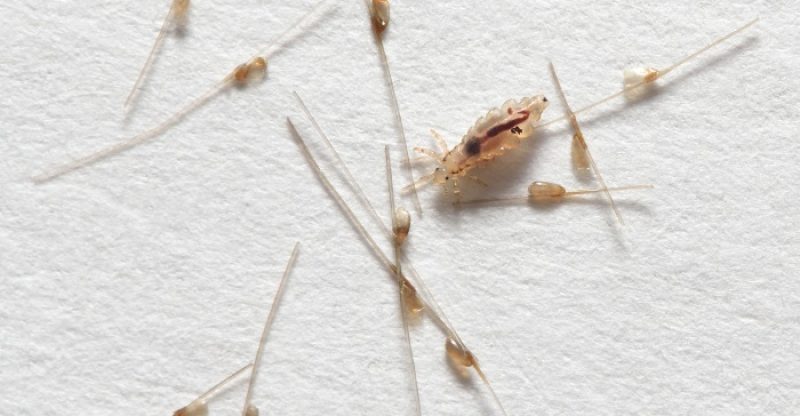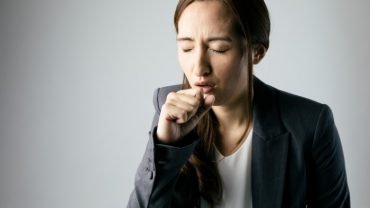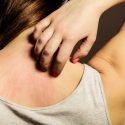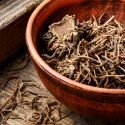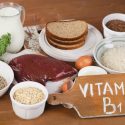How to Get Rid of Lice Quickly and Naturally
While no one wants to find out they have lice, knowing how to treat them is important.
There are many home remedies that rely on natural ingredients, which means you won’t have to worry about using chemicals to kill these annoying pests.
Regardless of if you have head lice, pubic lice, or body lice, we have all the best natural treatments to help you kill any infestation on your body.
Lice, especially head lice, can affect anyone, so knowing how to prevent a lice outbreak, as well as how to treat one if you should come into contact with these critters, is helpful for everyone.
Below, we share everything you need to know about lice, including how to get rid of them once they have found a home on your body.
Understanding Head Lice
Each year, up to 12 million cases of head lice occur, and the most common patients are young children between the ages of three and 11.
Most cases of head lice in the U.S. happen in children who attend preschool or elementary school, and those with whom they live.
While head lice do not carry or spread disease, they can induce intense itching, which can lead to secondary infections from scratching (1).
Knowing what to look for and acting quickly when you have a head lice infestation is therefore important in keeping everyone in your home healthy and itch-free.
Knowing what lice look like is vital for quickly identifying an infestation in yourself or a loved one.
Lice are tiny, parasitic insects.
Adult lice have six legs, and they appear oval in shape, like a small seed.
They do not have wings, grow up to three millimeters in length, and feed on the blood of humans.
Lice move only by crawling.
Lice vary in color, usually appearing gray or beige, but they become darker when they are feeding.
There are three kinds of lice commonly found on humans.
The first and most common is head lice, which can be found on the neck and scalp.
Head lice lay eggs and attach them to your hair shafts.
You are most likely to see visible head lice around your hairline, over your ears, and along your neck.
When you have a head lice infestation, doctors may refer to this as pediculosis.
Body lice are another form of insect that actually lives on fabrics like bedding and clothing but attaches to your skin to feed.
Body lice are common among the homeless and other populations who are not able to launder their clothing or bathe regularly.
Body lice can carry diseases, so treating infestations is important.
Pubic lice are the third form of human lice, and these parasites make their home on the skin and hair of your pubic area.
This type of lice, which are also known as crabs because of their body shape, is generally transmitted through sexual contact (2).
Because head lice is the most common form of human lice, and the one most likely to affect you, it is important to know how to identify them as well as how to get rid of lice should you find yourself infected.
Head lice attach their nits, or eggs, to the base of your hair shafts.
Nits are difficult to see and can take up to nine days to hatch.
The female who laid the eggs secretes a nit sheath that is like a glue that holds the eggs to the hair shaft.
This sheath remains after the eggs have hatched, and must be removed to prevent future problems (3).
If you have head lice, you must get rid not only of adult lice, but also of all the eggs that were laid in your hair.
This process can be time-consuming but is the only proven method for getting rid of lice and preventing future recurrence.
An adult louse is usually about the size of a sesame seed, making them difficult to spot, especially in the longer hair.
Nits are typically white or yellow and are extremely small.
Because they can be more translucent, nits sometimes take on the color of your hair, making them even harder to find.
In fact, nits are usually confused with dandruff.
The most significant difference between nits and dandruff, though, is nits stay generally put with combing or brushing, while dandruff comes away from your hair quickly.
Symptoms of Head Lice
There are some tell-tale signs that you or someone you care for has lice.
The following are the most common symptoms associated with a head lice infestation (4).
- Itching on the scalp or neck, sometimes intense;
- Visible lice on your body, hair, clothing, bedding, or other areas;
- A tickling sensation in your hair;
- Visible nits, or lice eggs, in your hair;
- Red bumps on your shoulders, neck, or scalp;
- Difficulty sleeping due to itching;
- Sores on your scalp or areas with lice, due to scratching.
How Do I Get Lice?
Because head lice are extremely easy to spread, it is very easy to contract this parasite.
When people are in close contact, such as when children are playing together, lice spread quickly.
Head-to-head contact is the most common way to transmit head lice, and this type of contact is common among children, which is why lice spread so quickly among that population.
While less frequent, you can also spread head lice by sharing items that have been in contact with them, such as hats, brushes, combs, and other articles.
When you find you or someone in your home has lice, it is, therefore, necessary to clean all items that come into contact with hair or the head, including pillows, plush toys, hair bands and barrettes, brushes, combs, hats, scarves, clothing, sports equipment, and uniforms (5).
Anyone can contract lice, and it doesn’t matter how clean you are, where you live, or how much money you have.
The biggest risk factor for contracting head lice is your age.
Young children and those who attend school are the most likely to get head lice.
Girls are more likely than boys to get head lice, probably due to more head-to-head contact among that gender.
Head lice seem to prefer the hair of Caucasians over African-Americans, perhaps due to hair texture making it more or less difficult to hold on and lay eggs.
Even though having head lice is never pleasant, luckily it is relatively easy to get rid of these invaders once you have them.
There are many over-the-counter and prescription medicines that can help treat head lice and other forms of lice, and there are also some highly effective natural treatments that work well for removing them.
Treating Lice Conventionally
If you decide to visit a doctor to diagnose your head lice, she or he is likely to examine your head with a magnifying lens and/or a Wood’s lamp to detect any nits that might be living on your head.
A Wood’s lamp uses a particular wavelength of light that makes nits stand out as blue in color.
If you want to check for yourself at home, have someone carefully comb through your hair, paying special attention to your roots, and look for small particles that are attached to your hair and don’t come off easily.
If you have head lice and want to use conventional methods to kill them, there are many over-the-counter medications that you can purchase for this purpose.
Most commercial products recommend an initial treatment plus a follow-up treatment nine days later, as these products generally do not kill any eggs that have recently been laid.
There are also prescription medicines you can use, which may be necessary if you have a recurrence, and these are generally much harsher and come with concerning side effects.
You can purchase products like Nix, which contains permethrin, or Rid, which is pyrethrin with additional compounds.
Both of these can cause rash, redness, itching, burning, tingling, or swelling of your scalp (6).
The additives in Rid can cause additional side effects, such as stuffy nose, wheezing, trouble breathing, or sneezing (7).
If your child has allergies to ragweed or chrysanthemum, they should not be given treatments with Rid, as it contains compounds found in these allergens.
Treating Lice Naturally
All lice treatments require diligence to ensure you got all the lice and eggs, and that is true of conventional and natural options.
If you prefer to treat your head lice with other remedies that have fewer side effects and are less expensive, you may want to opt for a more natural approach to treating your lice.
Combing for Nits
Regardless of the topical treatment you choose, combing is one of the most effective ways to get rid of lice.
Wet-combing hair with lice is a safe, natural, and effective way to remove all the nits from the hair over time, and using a nit comb to examine hair for lice is the most effective strategy for positively identifying a lice infestation (8).
Here is the basic procedure for wet-combing hair:
- Start with hair that is completely wet. Adding conditioner, preferably anti-lice conditioner, makes the process even easier.
- Use a nit comb, which is a fine-toothed comb made specifically for this purpose, and is widely available for just a few dollars.
- Start at the scalp and go all the way to the ends of each section of hair, combing the entire scalp.
- Repeat this entire process a second time before ending each session.
- Repeat the entire procedure every three to four days. Continue until it has been at least two weeks since you saw the last louse or nit.
This procedure is the only safe way to treat lice on infants and very young children.
Never use medicated products on infants.
Read all package directions for age and/or weight restrictions on over-the-counter lice treatments.
For infants, use the above procedure to treat lice.
Neem
The neem tree, which is also known as Indian lilac, is a member of the mahogany family and native to the Indian subcontinent.
Neem trees produce the seeds and fruits that provide neem oil.
This plant has a multitude of insecticidal properties that make it perfect for treating lice.
Not only can neem kill lice, but it also reduces the itchiness associated with lice.
It also can condition your hair, which is helpful after some of the harsh treatment hair endures while trying to get rid of lice.
Neem leaves and oil can be used to treat head lice. If you have leaves, place a handful into three cups of water.
Boil this until you have a green liquid, then strain the liquid and cool.
After you have shampooed your hair, rinse it with this neem solution three times.
Save the water in a large bucket as it falls off your hair, and reuse for the other two rinses.
You can also make a paste by grinding the leaves, then applying the mixture to your scalp for 30 minutes.
Shampoo your hair after this time.
Neem oil is usually easier to find, and this makes an excellent additive to your shampoo to treat lice.
Simply add neem oil to your regular shampoo, mix well, then use the combination several times per week for at least one month while treating lice.
You can make your own neem oil treatment by combining six drops of neem oil with three tablespoons of coconut oil.
Massage this mixture into your scalp, letting it stay in your hair for at least one hour.
Rinse well, then shampoo as usual.
Use this treatment two times a week for at least one month.
Sanitize Hair Accessories
If you want to prevent any possible chance of reinfestation, you need to wash thoroughly all tools that were used on the hair of the person with lice.
This includes combs, brushes, ribbons, barrettes, headbands, and styling tools.
Wash everything in water that is hotter than 130 degrees Fahrenheit, using plenty of soap.
Soaking these items in rubbing alcohol for one hour is also effective at killing lice.
Wash Soft Items
If someone in your house has lice, chances are quite high they have spread to other parts of your house besides that person’s scalp.
Washing any items the infested person has had contact with is the first step toward protecting the rest of the household and preventing reinfestation.
Remember to focus on items in the person’s room, as well as communal areas where the person has recently spent time.
Items such as bedding, pillows, blankets, clothing, hats, and plush toys should all be washed in water that is hotter than 130 degrees Fahrenheit, using plenty of soap.
When you place these items in the dryer, use the hottest setting possible, and make sure they are in the dryer for at least 20 minutes.
If there are items that cannot be washed but are possibly contaminated, place them in an airtight bag, seal it, and leave it alone for at least two weeks.
Vacuum Well
For items that cannot be washed, it is necessary to vacuum thoroughly several times to prevent the spread of lice in the home.
This includes not only floors and flooring like carpets, but also furniture, drapery, and other surfaces that have been in contact with the infected person.
If the person infested with lice has entered a room, they could have dropped even one hair that contains live lice or nits and thereby contaminated that space.
While trying to rid your house of lice, you will need to vacuum every few days, and you should continue this pattern for at least two weeks after you have seen your last live louse.
Covering furniture with plastic drop cloths is another good strategy to prevent lice from spreading.
Natural Hair Products
There are many natural products available that are created specifically to treat lice.
These include anti-lice shampoos, conditioners, and sprays that use natural ingredients to treat lice.
Look in your natural foods store or online for these products, if you do not want to create your own.
Essential Oils
Many essential oils contain properties that make them excellent for treating lice.
The most commonly used essential oils to treat lice include tea tree, ylang-ylang, and anise essential oils.
When combined with each other or other essential oils like lavender and eucalyptus, these natural remedies can kill lice and nits.
In studies examining the effectiveness of tea tree oil by itself, as well as combined with lavender oil, these essential oils consistently are able to eliminate nearly all lice and perform much better than conventional products available over the counter (9, 10).
Combining these and other essential oils with a carrier oil such as coconut oil makes for an easy-to-use natural treatment for lice.
Anise essential oil, when combined with coconut oil, has been shown to provide better results than over-the-counter treatments, as well.
The oils not only kill the lice but also offer relief from itching without harsh side effects (11).
Adding ylang-ylang oil to these two natural remedies increases the likelihood of successfully getting rid of the lice, and these oils present no adverse side effects, especially for young children (12).
Salt
Because salt is a desiccant, removing water from anything it touches, it can be used to get rid of lice, too.
For best results, start with dry hair.
Mix equal parts salt and vinegar thoroughly, then place the mixture into a spray bottle.
Spray the mixture onto your scalp, covering all roots, then put a shower cap over your head.
Leave this on for two hours, then wash your hair as you usually would.
Use this procedure every three days for at least two weeks after you see your last nit or live louse.
Smother the Lice
Smothering lice with various products is one way to eliminate them.
While some sources recommend mayonnaise or other foods, we recommend oils that smell better and can also help condition your hair in the process.
You can use olive, almond, or coconut oils to get the best results.
Start by coating your hair completely in oil and combing your hair all the way through.
If you have very thick hair, you may choose to put the oil directly on the comb, then working it through.
You need to cover thoroughly your scalp.
Be sure to rinse constantly your comb using hot water as you are working it through your hair.
Once you’ve covered all your scalp, wait for up to 30 minutes, then shampoo as usual.
Repeat daily for up to one week.
Use the wet-combing process after this week, to be sure all the nits and lice are completely removed (13).
You can also try other products to smother lice, including thick hair gel or petroleum jelly.
With petroleum jelly, use the same procedure as described for the oils, or leave it in your hair overnight and cover with a shower cap.
With hair gel, use it to style hair after you have treated it with another process or remedy, leaving it on all day.
Be sure to wash and comb thoroughly your hair before going to bed each night.
Vinegar
The mild acidity of vinegar may actually dissolve the substance that lice use to attach eggs to your hair shaft, making them easier to remove.
Try this procedure before you use the wet-combing process described earlier.
Simply spray your scalp with vinegar, choosing either white or apple cider varieties.
Let this sit for a few minutes, then add additional water for the wet-combing process.
Garlic
Garlic can be used to get rid of lice effectively.
Start with ten cloves of fresh garlic.
Grind these into a paste, mixed with three teaspoons of lime juice.
Thoroughly cover your scalp with this mixture, allowing it to sit for up to 30 minutes.
Rinse, then wash as you normally would.
The strong odor of the garlic affects lice dramatically, causing them to suffocate and die.
Hot Air
Lice cannot survive being exposed to hot air for extended periods.
A device that is commonly used to treat lice with hot air is called the Louse Buster.
It blows hot air onto lice-infested hair, killing the majority of both nits and live lice.
Because it blows air at all parts of your scalp at once, it works better than home hair dryers, but you can accomplish the same results at home with your blow dryer.
Just be sure you hit all parts of the scalp with the hot air for at least 30 minutes, repeating every day until you have not seen a live louse or nit for at least one week.
Use this in combination with other home remedies for best results.
Homemade Head Lice Treatment
If you want to make your own natural lice treatment to use at home, the following contains the perfect combination of lice-fighting ingredients to use on both adults and children with lice.
Combine three tablespoons of coconut oil with one teaspoon each of anise, tea tree, and ylang-ylang oils.
Apply this oil mixture to your scalp, covering all hair shafts and massaging it into your hair to the ends.
Comb your hair thoroughly with a fine-toothed comb.
Cover with a shower cap and let soak for several hours.
You can use a hair dryer or sit in the sun for short intervals to speed this process, too.
Dispose of the shower cap by sealing it in a bag and placing it an outdoor trash can.
Combine two cups of apple cider vinegar and one cup of water, spraying your roots thoroughly with this mixture.
Saturate all your hair, including the ends.
Thoroughly rinse your hair, comb it again, apply a small amount of coconut oil, then allow your hair to dry naturally or with a blow dryer.
Leave this in your hair until the next time you wash it.
Repeat the process at least once per week until all lice are eradicated.
Precautions
If you or someone in your home has lice, and you have tried natural or over-the-counter treatments for two weeks or more but you are unable to get rid of them, contact your doctor.
Always call your doctor if there are signs of infection, such as swelling, fever, tenderness, redness, or pain.
If sores on the scalp will not heal, call your doctor.
You should always test for sensitivity to essential oils if you have never used them before, especially with children.
Do a patch test on the arm or wrist, as some oils can cause serious allergic reactions in children and adults.
If you have small children, toddlers, or infants, do not cover your furniture with plastic while trying to treat lice.
This creates a suffocation hazard.
Avoid the use of fumigants such as foggers, bug bombs, or sprays, as they are highly unnecessary and create unsafe breathing conditions, especially for young children and those with asthma.
Lice are easily treated in other ways, and these measures are unnecessary (14).
Because children are highly susceptible to contracting head lice, it is not unusual for many households in the U.S. to become infested with this annoying pest.
If you or someone in your home has head lice, remember that you should treat everyone in the house to prevent the spread of the lice or reinfestation once everyone has been treated.
Becoming infected with lice can happen to anyone, so learning the best ways to deal with this parasite is a good idea for everyone.
Lice attach to your hair shaft close to your scalp to lay eggs, called nits.
Some of the best remedies for getting rid of lice involve painstakingly removing all the visible nits in the hair with a comb.
Other methods use oils and other natural ingredients to kill live lice and get rid of eggs before they can hatch.
Prevention of reinfestation is just as important as treating the hair, and this involves thoroughly cleaning all the soft and hard surfaces that may have been exposed to lice in your home.
Washing bedding, clothing, and hair care accessories is vital, as is thoroughly vacuuming all rooms that may contain hair shed from the infected person.
Natural remedies for treating lice include wet-combing, using essential oils, smothering the lice with various ingredients, or using neem oil, salt, vinegar, garlic, or hot air to kill the lice.
Treating lice takes patience and persistence, as they are not likely to disappear after just one or a few treatments.
Stay with it until you are certain that all live lice and eggs are eradicated, to prevent future problems.
FDA Compliance
The information on this website has not been evaluated by the Food & Drug Administration or any other medical body. We do not aim to diagnose, treat, cure or prevent any illness or disease. Information is shared for educational purposes only. You must consult your doctor before acting on any content on this website, especially if you are pregnant, nursing, taking medication, or have a medical condition.
HOW WOULD YOU RATE THIS ARTICLE?
